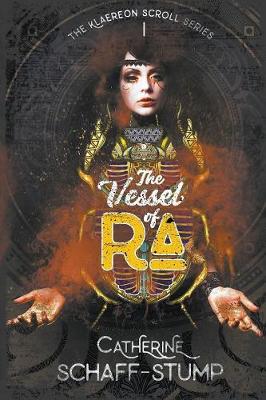Reviewed by Terri M. LeBlanc on
The Vessel of Ra is a solid read. Every minute of the story is packed with action, mystery and layers of secrets. Lucy and Octavia’s family, the Klareons, has a unique bond with the demons whose origins are rooted in Egyptian mythology. As Lucy learns through her adventures in Venice, she and her sister have not been told everything about the deal her ancestor made to control the demons. As Lucy learns the truth, she becomes even more determined to fix things leading to a shocking turn in the story which was upsetting for this reader. View Spoiler »
Then there is Carlo whose last name may sound super familiar to history buffs—Borgia. Carlo’s family also has some secrets and Carlo has been kept in the dark by his mother and his grandfather. Carlo finds Lucy’s cause noble and he quickly becomes her champion even though he doesn’t fully understand the fight. In fact, the secrets kept by both families play a pivotal role in the action of the story as once Carlo and Lucy meet, their fates are tied together as they race against the clock and towards Lucy’s inevitable trial with Ra.
All of the characters absolutely shine and are unique. Schaff-Stump does an excellent job describing the characters in way that doesn’t bog down the story. It is easy to visualize everyone in story including the fantastical creatures like Ra, Isis and Thoth. The strong descriptions extend to locations the story takes place—occupied Venice—Carlo’s hometown, the Underworld (which reminded me of scenes from the movie What Dreams May Come) and England—the location Lucy and Octavia’s magical estate. In fact, bits of Venice’s history were hinted at enough (Venice was occupied by Austria?!) that I was curious to know more, but with so much going on in the story already, there’s no way the author could have included more especially when the politics of Venice at the time the story was set didn’t directly influence the issues the characters were encountering.
The only downside of the book is there is a lot of setup. While the layers of secrets and how they intertwine and intersect do drive the story forward as the characters uncover the lies and half-truths, the full truth is never revealed. The reader just encounters more secrets and more people (or demons) unwilling to reveal what they are truly after. This becomes a bit wearisome by the end of the novel. However, I don’t believe it would prevent me from reading the next book in the series. I have a feeling this is a long play and patience will be required as the series progresses. After all the Klareons and Borgias have been working in the shadows and keeping secrets for centuries. Who am I, a simple reader just entering their saga, for expecting that to come unraveled in just one book?
This review was originally posted on Second Run Reviews
Reading updates
- Started reading
- 11 August, 2017: Finished reading
- 11 August, 2017: Reviewed
